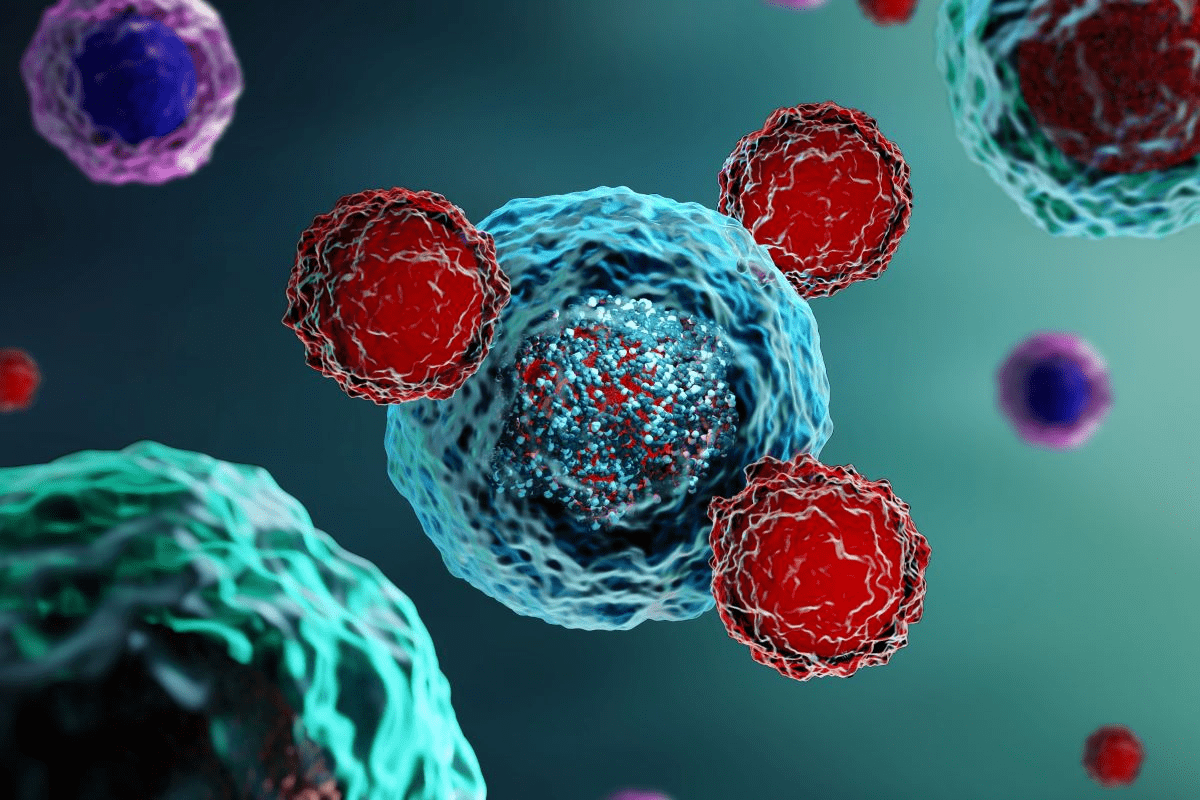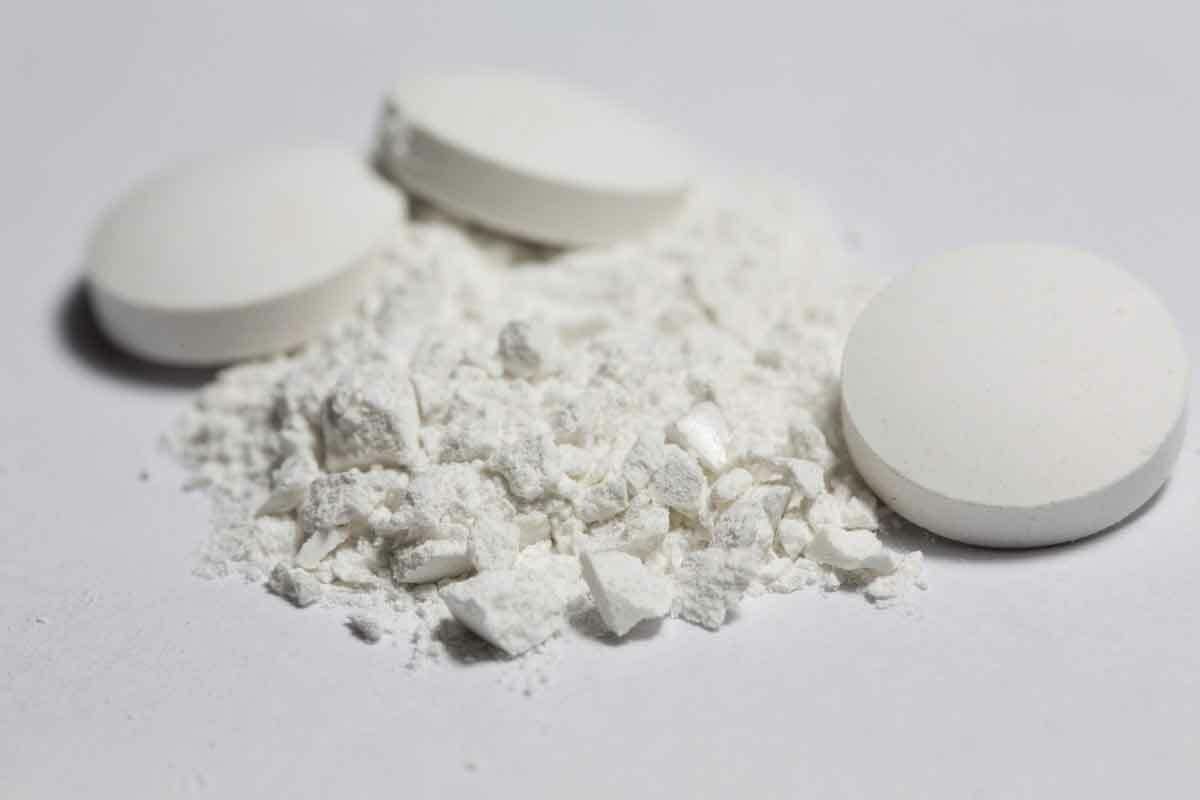Last Updated on November 26, 2025 by Bilal Hasdemir

Ever wondered how long an angiogram takes and what happens during it? At Liv Hospital, our experts focus on your safety and comfort. They make sure you get the care you need, when you need it.
The angiography procedure time can vary depending on your condition. It usually lasts from 30 minutes to 2 hours. This depends on how complex the case is and if extra treatments like angioplasty are needed. In some cases, the angiography procedure time might be as short as 15 minutes or take a few hours for detailed cases.
Knowing what to expect from the angiogram procedure can make you feel more relaxed. Our team is here to guide you through each step, ensuring you’re comfortable and fully informed.
Key Takeaways
- The duration of an angiogram can vary from 15 minutes to a few hours.
- The complexity of the case and additional interventions affect the overall timing.
- Liv Hospital’s specialists prioritize patient safety and comfort.
- Timely and patient-centered care is our top priority.
- Understanding the angiogram process can help reduce patient anxiety.
Understanding Angiography: A Brief Overview

Angiography uses X-rays and contrast dye to show blood vessels in detail. It helps find vascular diseases. Doctors use it to see inside arteries, veins, and heart chambers. This helps them spot blockages and other issues that need treatment.
Exploring angiography means learning about its basics. This includes the different types of angiograms and what they’re used for. Knowing this helps patients understand their tests and treatments better.
What is an Angiogram?
An angiogram is a special test that shows blood flow in arteries. A catheter is put into a blood vessel and moved to the needed area. Then, contrast dye is injected, and X-rays are taken to see the blood flow.
This detailed view helps doctors find problems like coronary artery disease. It also helps with peripheral artery disease and other vascular issues.
Common Types of Angiograms
There are many types of angiograms, each for different body areas. Here are some common ones:
- Coronary angiogram: Checks the coronary arteries for blockages.
- Cerebral angiogram: Looks at brain blood vessels for issues like aneurysms.
- Peripheral angiogram: Examines limb blood vessels for peripheral artery disease.
- Pulmonary angiogram: Sees lung blood vessels, often for pulmonary embolism.
| Type of Angiogram | Area of Focus | Common Diagnoses |
| Coronary Angiogram | Coronary arteries | Coronary artery disease, blockages |
| Cerebral Angiogram | Blood vessels in the brain | Aneurysms, arteriovenous malformations |
| Peripheral Angiogram | Blood vessels in the limbs | Peripheral artery disease |
| Pulmonary Angiogram | Blood vessels in the lungs | Pulmonary embolism |
Why Angiograms Are Performed
Angiograms are done to diagnose and sometimes treat vascular conditions. Doctors say angiography is key in treating heart diseases. It gives detailed insights for treatment plans.
“Angiography is a cornerstone in the management of vascular diseases, providing critical information that influences patient care pathways.”
Interventional Cardiologist
Knowing about angiography helps patients prepare for their tests. Angiograms are important in healthcare. They help diagnose and guide treatments.
Angiography Procedure Time: Standard Duration Explained

Many patients wonder how long an angiogram will take. The answer varies based on several factors. We’ll look at the usual time for angiograms and what can affect it.
The 30-60 Minute Average for Standard Procedures
Most angiograms last 30 to 60 minutes. This is the typical time for many patients. Doctors say, “The average angiogram procedure is quick. Patients can usually go back to their normal activities soon after.”
The time needed can change based on the case’s complexity and the techniques used. For example, some angiograms might need extra imaging or detailed analysis. This can make the procedure longer.
Extended Procedures: When Angiograms Take Up to 2 Hours
Sometimes, angiograms can last longer, up to 2 hours. This can happen for several reasons. These include needing extra interventions or the patient’s vascular anatomy being complex.
A medical expert explained, “While most angiograms are simple, some need more time and careful handling.” Such longer procedures show the need for flexibility and readiness in medical settings.
Total Hospital Time vs. Actual Procedure Duration
It’s important to know the difference between total hospital time and procedure time. The angiogram itself might take 30-60 minutes. But, the total time at the hospital can be much longer.
Patients should be ready to spend several hours at the hospital. This includes time for preparation, recovery, and observation after the procedure. Generally, patients can expect to be at the hospital for 4-6 hours in total.
Understanding angiogram procedure times helps patients and their families plan better. This reduces anxiety and improves the experience.
Pre-Procedure Preparation: Timeline Before Your Angiogram
Knowing how long it takes to prepare for an angiogram can make you feel less anxious. The steps to get ready happen at different times before the procedure.
Pre-Admission Testing (1-2 Weeks Before)
Your healthcare provider might ask for tests before your angiogram. This is to check your health and find any risks. It usually happens 1-2 weeks before and includes:
- Blood tests to check your blood clotting and overall health
- Electrocardiogram (ECG) to assess your heart’s function
- Imaging tests such as chest X-rays or other relevant scans
- Review of your medical history and current medications
These tests help your healthcare team get ready for your angiogram. They might also change your treatment plan.
Day-of-Procedure Preparation (2-3 Hours)
On the day of your angiogram, arrive at the hospital a few hours early. You’ll go through final preparations, which include:
- Changing into a hospital gown
- Receiving an intravenous (IV) line for medication and contrast dye
- Undergoing a final assessment of your vital signs
- Receiving instructions on what to expect during the procedure
This preparation time is usually 2-3 hours. It depends on how complex your case is and what your healthcare provider needs.
Paperwork and Consent Process (30-45 Minutes)
Before your angiogram, you’ll need to fill out paperwork and give consent. This takes 30-45 minutes and includes:
- Reviewing and signing consent forms
- Providing information about your medical history and allergies
- Discussing any concerns or questions you have with your healthcare team
It’s important to read the consent forms carefully. Ask any questions you have to make sure you understand the procedure.
To summarize, here’s a table outlining the typical timeline for pre-angiogram preparation:
| Preparation Step | Timeline | Description |
| Pre-admission testing | 1-2 weeks before | Blood tests, ECG, imaging tests, medical history review |
| Day-of-procedure preparation | 2-3 hours before | Changing into hospital gown, IV line, vital sign check, final instructions |
| Paperwork and consent | 30-45 minutes | Reviewing and signing consent forms, providing medical information |
By understanding the preparation timeline, you can better plan your day. This can help reduce any anxiety about your angiogram procedure.
Step-by-Step Breakdown of the Angiogram Process
Exploring the angiogram procedure means looking at each step. This process is detailed and requires careful steps. Knowing what to expect helps patients prepare better.
Initial Setup and Positioning
The first part, setup and positioning, takes 15 to 30 minutes. The patient lies on a table, and the area for the catheter is cleaned. Local anesthesia might be used to reduce pain.
Catheter Insertion and Navigation
Inserting and navigating the catheter takes 10 to 20 minutes. A small cut is made, and the catheter is put into the blood vessel. The specialist uses imaging to guide it accurately.
Contrast Dye Injection and Imaging
The dye injection and imaging part lasts 15 to 30 minutes. The dye is injected to show the blood vessels on the imaging. X-rays or other methods capture detailed images to find any issues.
Catheter Removal and Wound Closure
Removing the catheter and closing the wound takes 10 to 15 minutes. After the imaging, the catheter is taken out, and the site is closed. The wound might be stitched or stapled, depending on the size and location.
| Step | Time Required | Description |
| Initial Setup and Positioning | 15-30 minutes | Patient preparation and positioning |
| Catheter Insertion and Navigation | 10-20 minutes | Catheter placement and guidance |
| Contrast Dye Injection and Imaging | 15-30 minutes | Imaging with contrast dye |
| Catheter Removal and Wound Closure | 10-15 minutes | Catheter removal and wound closure |
Understanding the angiogram process helps patients see the care and detail involved. Each step is important for accurate results, even if the total time varies.
Factors That Can Extend Angiogram Duration
The time it takes for an angiogram can vary. This is because each procedure is unique. We want to help you understand what might make your angiogram longer.
Patient-Related Factors
Several things about you can affect how long your angiogram takes. For example, complex vascular anatomy needs more time to image. If you have multiple blockages or severe arterial disease, we’ll need to take more pictures.
Also, your age, overall health, and previous medical history can influence the procedure. A cardiologist, said, “The more complex the patient’s vascular condition, the more time we need to ensure we capture all necessary images for an accurate diagnosis.” This shows how important it is to tailor the procedure to each patient’s needs.
Procedural Complexities
The complexity of the angiogram can also affect its duration. If the procedure involves multiple catheterizations or specialized techniques, it will take longer. If we’re doing other interventions like angioplasty or stenting at the same time, it will also add to the time.
- Complex catheter navigation
- Need for additional imaging angles
- Use of specialized contrast agents
Handling these complexities requires a lot of skill and experience. Our team is committed to providing the best care possible.
Unexpected Findings Requiring Additional Investigation
Sometimes, we might find things we didn’t expect during the angiogram. If we find unexpected blockages or anomalies, we might need to do more imaging or even intervene right away. This can make the procedure longer, but it’s to make sure we’re giving you the best care.
“The ability to adapt during the procedure is critical. It lets us handle unexpected issues quickly and effectively,” said , pointing out the importance of being flexible during angiograms.
In summary, while an angiogram usually lasts between 30 to 60 minutes, many factors can make it longer. Knowing these factors can help you prepare for your procedure.
Combined Procedures: When Angiograms Include Interventions
Angiograms are not just for looking at blood vessels. They can also lead to immediate treatments. If a blockage is found, the team can start additional procedures right away.
These extra steps can change how long an angiogram takes. Let’s look at some common treatments that might be done during an angiogram. We’ll see how they affect the total time.
Angiogram with Angioplasty (Additional 30-60 Minutes)
If a blockage is seen, angioplasty might be done. This uses a balloon to widen the artery. It can add 30 to 60 minutes to the procedure.
Doctors say angioplasty right after an angiogram has changed how we treat heart disease. It makes treatment faster and reduces the need for more steps.
Angiogram with Stent Placement (Additional 45-90 Minutes)
After angioplasty, a stent might be put in. A stent is a small device that keeps the artery open. This step can add 45 to 90 minutes to the procedure.
Doctors decide to put in a stent based on the blockage’s severity and the patient’s health. A leading cardiologist says stent placement is key to better patient outcomes.
Angiogram with Thrombolysis (Additional 60+ Minutes)
Thrombolysis is used for acute thrombosis during an angiogram. It involves clot-dissolving medications in the artery. It can add over 60 minutes, depending on the case.
Thrombolysis during an angiogram needs careful monitoring. A medical journal notes it’s a powerful way to handle acute vascular occlusions.
How These Additions Affect Total Procedure Time
The time for an angiogram with interventions varies. It can take from 1 to 3 hours, sometimes longer. The specific procedures and case complexity determine this.
While these procedures take longer, they often offer a better treatment. We’ve talked about how preparation and recovery times also affect the total time.
Recovery Time Following an Angiogram
Knowing what to expect after an angiogram is key. The time it takes to recover can change based on the type of angiogram and your health. It’s important to understand this to manage your recovery well.
Immediate Post-Procedure Monitoring
Right after your angiogram, you’ll be in a recovery area. Here, your team will watch your vital signs closely. This immediate post-procedure monitoring can last from 2 to 6 hours. They’ll check for any issues and make sure you’re doing okay.
Outpatient vs. Inpatient Recovery Timelines
Whether you’re an outpatient or inpatient affects your recovery time. Outpatients usually go home the same day with less monitoring. Inpatients might stay longer for more treatment or observation, which can extend their recovery.
When You Can Return to Normal Activities
Most people can get back to normal in a few days. But, it’s important to listen to your doctor’s advice on post-angiogram care. Avoiding strenuous activities for a bit is usually recommended to ensure you fully recover.
Complete Recovery Expectations
The total recovery time can vary from a few days to a week or more. It depends on your health and the procedure’s complexity. We’ll guide you on what to expect, including any follow-up appointments or signs of complications.
Understanding the recovery process helps patients prepare for the post-angiogram period. This ensures a smoother and more comfortable recovery.
Specialized Angiogram Procedures and Their Timing
Angiogram procedures come in different forms, each with its own time frame. Medical technology keeps getting better, leading to new types of angiograms for specific needs. Let’s dive into these specialized procedures and their typical times to understand them better.
Cardiac Angiograms
Cardiac angiograms, or coronary angiograms, help see the coronary arteries. They usually take 30 to 60 minutes. A catheter is put through an artery in the leg or arm and goes to the heart. Then, contrast dye is injected to show the arteries on an X-ray.
Cerebral Angiograms
Cerebral angiograms check the brain’s blood vessels. This procedure lasts 60 to 90 minutes. A catheter is inserted into an artery in the groin and guided to the brain’s blood vessels. Contrast dye is used for detailed images.
Peripheral Angiograms
Peripheral angiograms look at blood vessels outside the heart and brain, usually in the legs. They usually take 30 to 60 minutes. A catheter is inserted, and contrast dye is used to image the peripheral arteries.
Pulmonary Angiograms
Pulmonary angiograms examine the lungs’ blood vessels. They take 45 to 75 minutes. A catheter is guided through a vein to the pulmonary arteries, where contrast dye is injected for imaging.
Knowing the timing of these angiogram procedures helps patients prepare. While times can vary, knowing the usual time can ease anxiety about these tests.
Medical experts say, “The success of an angiogram depends on clear, detailed images of blood vessels. This is key for accurate diagnosis and treatment planning.” Medical technology keeps getting better, making these procedures more efficient and accurate.
Technology’s Impact on Reducing Angiography Procedure Time
Technology has greatly reduced the time needed for angiography procedures. We’ve seen big improvements in medical imaging. These changes have made angiograms more efficient and better for patients.
Modern Imaging Equipment and Efficiency Gains
New imaging tools have been key in cutting down angiography times. Modern angiography suites have flat-panel detectors and high-speed data processing. These features help get and process images faster.
These updates have brought many benefits, like:
- Images are processed and reconstructed quicker
- Image quality is better, so fewer images are needed
- More procedures can be done in less time
Digital Subtraction Angiography
Digital Subtraction Angiography (DSA) has also changed angiography times. DSA subtracts pre-contrast images from post-contrast ones. This makes blood vessels stand out more clearly.
DSA offers several advantages, such as:
- Better views of blood vessels
- Less need for multiple contrast injections
- Shorter procedure times
CT and MR Angiography Alternatives
CT and MR angiography are also important. They are non-invasive and can be faster and safer than traditional angiography. They offer benefits like:
| Imaging Modality | Typical Procedure Time | Invasiveness |
| Catheter Angiography | 30-60 minutes | Invasive |
| CT Angiography | 15-30 minutes | Non-invasive |
| MR Angiography | 30-60 minutes | Non-invasive |
Future Innovations Promising Shorter Procedures
We’re expecting even more tech advancements to make angiography faster. Some exciting areas include:
- Artificial intelligence for better image analysis
- New contrast agents that are safer
- Next-generation imaging like fusion imaging
These new ideas could make procedures even quicker and more accurate. They promise better results for patients.
Preparing for Your Angiogram: Complete Timeline
To have a smooth angiogram experience, following a detailed preparation timeline is key. This guide will help you prepare for your procedure. You’ll learn about medication adjustments and planning your day.
One Week Before: Medication Adjustments
About a week before your angiogram, you might need to adjust your medications. It’s essential to consult with your healthcare provider before stopping any medication, like antiplatelets and anticoagulants. They will tell you which medications to keep taking or stop before the procedure.
Some common medications that may need adjustment include:
- Blood thinners like warfarin or aspirin
- Antiplatelet drugs such as clopidogrel
- Certain diabetes medications
Always follow your healthcare provider’s instructions carefully. This will help avoid any complications during the procedure.
24 Hours Before: Dietary Restrictions
24 hours before your angiogram, you might need to follow dietary restrictions. Typically, you will be asked to fast for a certain period before the procedure, usually starting from midnight the night before. But, this can vary based on the type of angiogram and your healthcare provider’s instructions.
It’s also a good idea to:
- Stay hydrated by drinking plenty of water until the fasting period begins
- Avoid heavy meals or rich foods that could cause discomfort during the procedure
Morning of Procedure: Arrival and Final Preparation
On the morning of your angiogram, plan to arrive at the hospital or clinic early. Typically, you should arrive at least 1-2 hours before the scheduled procedure time to complete any necessary paperwork and preparations.
During this time, you will:
- Complete any remaining paperwork and consent forms
- Change into a hospital gown
- Have an IV line inserted for medication or contrast dye
Creating a Day Plan: Transportation and Assistance
As you prepare for your angiogram, plan for transportation and assistance on the day of the procedure. Due to the effects of the procedure and any sedation used, you will not be able to drive yourself home.
| Task | Responsibility | Timing |
| Arrange transportation | Family/Friend | Before the procedure day |
| Arrange for someone to stay with you | Family/Friend | For at least 24 hours post-procedure |
| Prepare a list of emergency contacts | You | Before the procedure day |
By following this detailed timeline, you can ensure a smooth angiogram experience. This makes the procedure as stress-free as possible.
Patient Experiences: Real-World Angiogram Timing
Angiogram procedures are common but can cause anxiety. Real experiences can offer reassurance. Patients often wonder about the procedure’s length and what to expect in the hospital.
Common Questions About Procedure Length
Many patients ask, “How long will the angiogram procedure take?” It usually lasts between 30 minutes to an hour. But, some procedures might take longer because of different factors.
During the procedure, patients might feel flushed or need to urinate. This is because of the contrast dye used. Knowing this can help patients prepare mentally.
Managing Anxiety About Procedure Duration
To manage anxiety, understanding the process and preparing is key. Breathing exercises and having a support person present can help a lot.
Talking to your healthcare provider about your concerns beforehand is also helpful. Knowing what to expect can greatly improve your comfort.
Tips for a Smoother, Potentially Faster Experience
To have a smoother experience, follow all pre-procedure instructions. This includes dietary restrictions, medication adjustments, and arriving on time.
- Wear comfortable, loose-fitting clothing to the hospital.
- Bring any required documents, insurance cards, and a list of medications.
- Have a friend or family member available to drive you home after the procedure.
What to Bring for Your Hospital Stay
Packing the right items for your hospital stay can make it more comfortable. Essentials include:
| Item | Purpose |
| Comfortable clothing | Ease during recovery |
| Insurance documents | Administrative purposes |
| List of medications | Informing healthcare providers |
Being prepared and understanding the angiogram process can reduce anxiety. Real-world experiences show that with the right mindset and preparation, an angiogram can be manageable and quick.
Conclusion: Planning Your Day Around an Angiogram Procedure
Learning about the angiogram procedure can make you feel more ready for your diagnosis and treatment. We’ve talked about how the time for an angiogram can change. But being well-prepared can really help.
When you plan for your angiogram, think about the time needed for getting ready, the procedure itself, and recovering. On the day of your angiogram, you’ll likely spend several hours at the hospital. The actual procedure usually takes between 30 minutes to 2 hours.
Knowing what to expect on angiogram day can lower your stress and make things easier. It’s a good idea to have someone with you at the hospital and to drive you home. Being informed and ready can help you focus on getting better.
FAQ
How long does an angiogram procedure typically take?
Angiograms usually last between 30-60 minutes. In some cases, they can take up to 2 hours.
What factors can affect the duration of an angiogram?
Several things can change how long an angiogram takes. This includes the patient’s health, how complex the procedure is, and any unexpected findings.
How long does it take to recover from an angiogram?
Right after the procedure, you’ll be watched for 2-6 hours. It can take a few days to a week to fully recover.
Can other procedures be performed during an angiogram?
Yes, other procedures like angioplasty and stent placement can be done during an angiogram. This can add 30-90+ minutes to the time.
How long does a cardiac angiogram take?
Cardiac angiograms usually take 30-60 minutes.
What is the difference between total hospital time and actual procedure duration?
Total hospital time includes getting ready, recovering, and being monitored. The actual procedure time is just the time spent doing the angiogram.
How can I prepare for an angiogram to ensure a smooth experience?
To prepare, follow the instructions given to you. This includes adjusting your medications, following dietary rules, and making plans for getting there and back.
Can technological advancements reduce angiogram procedure time?
Yes, new technology like digital subtraction angiography has made procedures faster.
How long does it take to return to normal activities after an angiogram?
Most people can get back to normal in a few days. But, you should avoid hard activities for a week or more.
Are there different types of angiograms, and do they have different procedure times?
Yes, there are different types like cardiac and cerebral angiograms. Each type can take anywhere from 30-90 minutes.
What should I bring for my hospital stay during an angiogram?
Bring comfy clothes, any medicines you need, and someone to support you.
How can I manage anxiety about angiogram procedure duration?
Talk to your doctor about your worries. Arriving ready and having someone with you can also help.
Reference
- National Heart, Lung, and Blood Institute. (2023). Peripheral artery disease. https://www.nhlbi.nih.gov/health/peripheral-artery-disease






